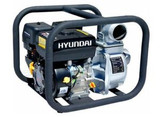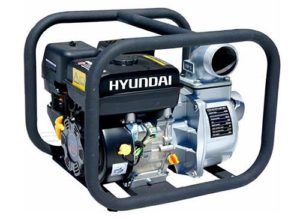Just How Does a Self-Priming Centrifugal Water Pump Work?

Priming a water pump is probably the first and most important thing you should do before operating it.
The majority of problems with a water pump are caused by not priming the pump or not priming it properly, causing down time, possible pump damage and frustration.
Thankfully all of The PowerSite's petrol water pumps and diesel water pumps are simple and easy to prime.
FIRSTLY YOU NEED TO ENSURE THE FOLLOWING:
- There are no leaks in the suction hose or connection to the water pump.
- The pump body is filled with water before starting to prime.
- The seals and 'o' rings are intact and are not perished or cracked and are air and water tight.
WHAT IS A CENTRIFUGAL PUMP?
A centrifugal pump uses centrifugal force to create the pressure difference needed to allow you to pump a liquid.
If you imagine the effect of a vehicle tyre spraying water off a wet road, it’s not displacing the water by scooping but primarily from the spinning centrifugal force.
Standard, non-self-priming centrifugal pumps are okay when they operate in submerged or ‘flooded’ suction lines because the impeller is surrounded by enough water to allow the pump to run - but the enemy of a non-self-priming pump is air.
If a non-self-priming pump encounters air, it can stop pumping due to an air lock and won’t continue pumping until the air lock has been removed.
The major benefit of the self-priming pump is it will have a water reservoir within the pump body to allow the pump to self-prime.
Therefore, if the self-primed pump has been primed correctly and does encounter air, instead of generating an airlock and stopping pumping, it will simply automatically re-prime itself and continue on working.
This water reservoir should remain full after the pumps has been used, so the pump will self-prime every time it is started.
HOW DOES A SELF-PRIMING PUMP WORK?
A self-priming centrifugal pump uses a mixture of air and water which has similar pumping properties to regular water. This allows the pump to draw the air from the suction line until it is pumping water only.
It is important to understand that self-priming pumps cannot operate without water. They need to be filled with water through the priming hole so that during the priming cycle, air enters the pump and mixes with water at the impeller.
Water and air are discharged together by the centrifugal action of the impeller into the water reservoir. The air naturally tends to rise, while the water tends to sink.
Air-free water, now heavier than air-laden water, flows by gravity back down into the impeller chamber, ready to mix with more air coming into the pump body from the suction hose.
Recirculation of water within the pump stops when pumping begins.
The next time the pump is started, it will 'self-prime' - that is, it will be able to once again mix the water and air in the casing to create a pumpable fluid until the pump is fully primed again.
It is essential to make sure that your suction hose has no air leaks, as the pump will not prime if it is sucking in air through a poorly fitting hose connection. Also, all seals and 'o' rings in the pump must be air and water tight.
SO CAN I JUST START A SELF-PRIMING PUMP ANY TIME, EVEN IF IT'S DRY INSIDE?
No - self-priming pumps must have water in the pump body to allow it to work.
Your self-priming pump will not work right out of the box. If it's full of air, it won't prime.
Self-priming refers to the pump's ability to repeatedly turn an air/water mixture into a pumpable liquid, NOT the ability to create a vacuum out of thin air!
You should never run a water pump without water in the pump, as it can cause seal failure.

